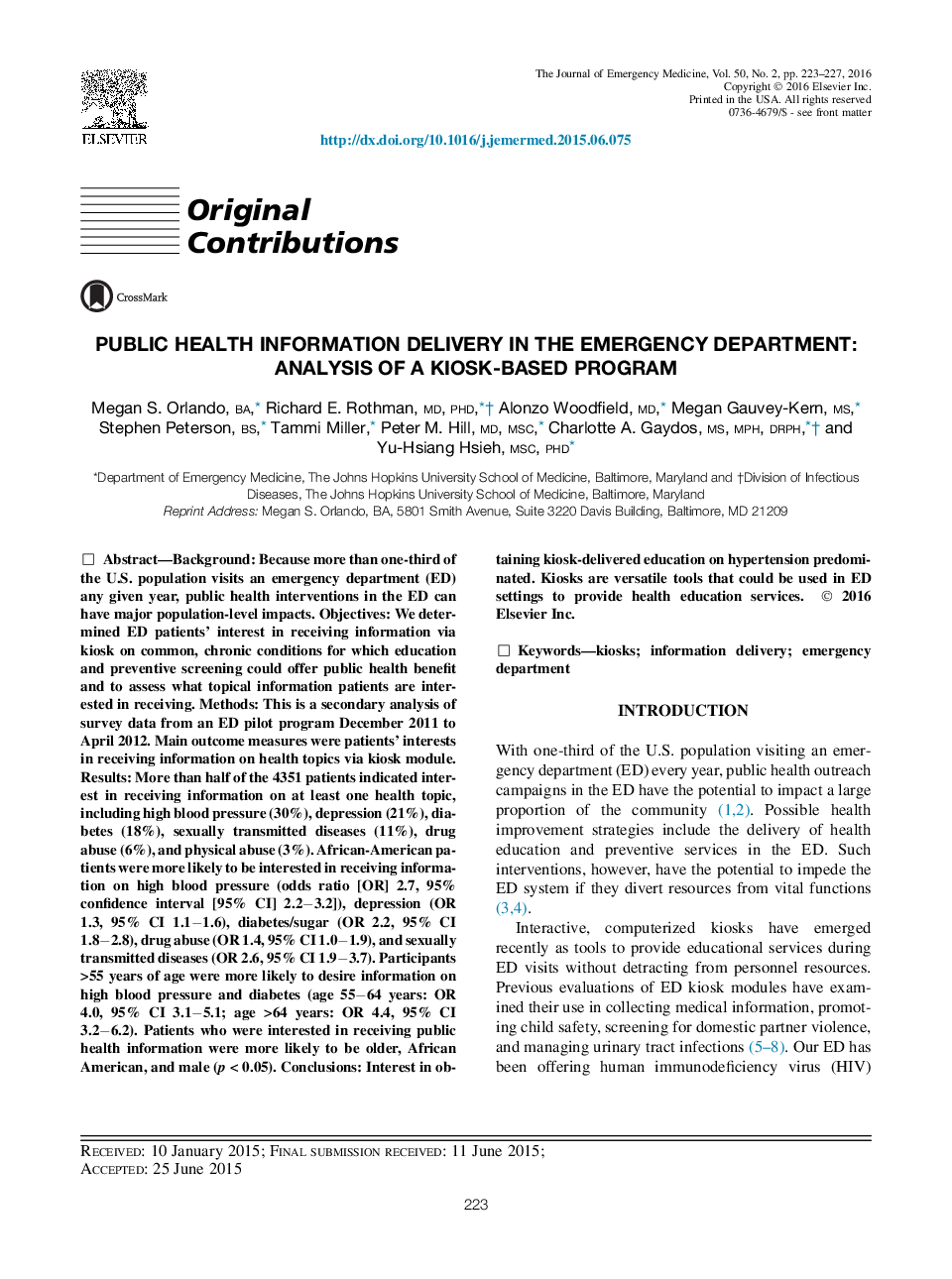| Article ID | Journal | Published Year | Pages | File Type |
|---|---|---|---|---|
| 6084881 | The Journal of Emergency Medicine | 2016 | 5 Pages |
BackgroundBecause more than one-third of the U.S. population visits an emergency department (ED) any given year, public health interventions in the ED can have major population-level impacts.ObjectivesWe determined ED patients' interest in receiving information via kiosk on common, chronic conditions for which education and preventive screening could offer public health benefit and to assess what topical information patients are interested in receiving.MethodsThis is a secondary analysis of survey data from an ED pilot program December 2011 to April 2012. Main outcome measures were patients' interests in receiving information on health topics via kiosk module.ResultsMore than half of the 4351 patients indicated interest in receiving information on at least one health topic, including high blood pressure (30%), depression (21%), diabetes (18%), sexually transmitted diseases (11%), drug abuse (6%), and physical abuse (3%). African-American patients were more likely to be interested in receiving information on high blood pressure (odds ratio [OR] 2.7, 95% confidence interval [95% CI] 2.2â3.2]), depression (OR 1.3, 95% CI 1.1â1.6), diabetes/sugar (OR 2.2, 95% CI 1.8â2.8), drug abuse (OR 1.4, 95% CI 1.0â1.9), and sexually transmitted diseases (OR 2.6, 95% CI 1.9â3.7). Participants >55 years of age were more likely to desire information on high blood pressure and diabetes (age 55â64 years: OR 4.0, 95% CI 3.1â5.1; age >64 years: OR 4.4, 95% CI 3.2â6.2). Patients who were interested in receiving public health information were more likely to be older, African American, and male (p < 0.05).ConclusionsInterest in obtaining kiosk-delivered education on hypertension predominated. Kiosks are versatile tools that could be used in ED settings to provide health education services.
